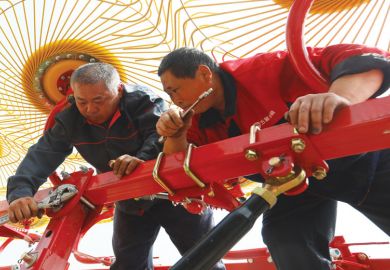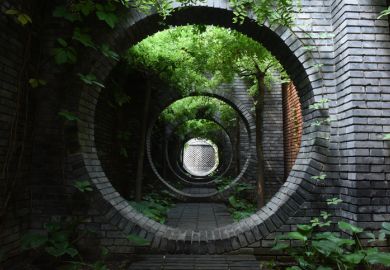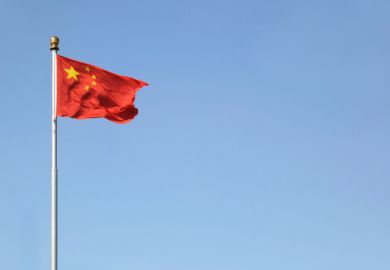The fellows of the Royal Astronomical Society are a varied crowd. Though most are professional astronomers or, curiously, geophysicists (the latter since the 1920s, when the RAS became the professional organisation for experts on the interior of the earth as well as for those on the sky), their interests are wide; they have a special enthusiasm for the history of their subject; and the professionals coexist with many knowledgeable amateurs.
So designing a publication aimed to intrigue this group is no trivial challenge, and over the years the RAS has addressed it in numerous ways. Its oldest publication is the Monthly Notices, probably the world's top publication for astronomy research after the Astrophysical Journal but emphatically not for the general reader. More recently the society launched the Geophysical Journal, also a vehicle for original research, which has now merged to form a pan-European geophysics publication. And in 1960, the RAS decided that it needed a more general-interest publication, the Quarterly Journal, to broaden the attractions of its fellowship.
Now, over 30 years later, the venerable QJ has been killed and replaced with Astronomy and Geophysics - A&G to the cognoscenti. Out has gone Blackwells, the commercial partner for the RAS research journals, and in has come the Institute of Physics, whose publishing arm deserves credit for making physics fun with its excellent magazine Physics World. In, too, comes a real journalist as editor: Sue Bowler, formerly of the New Scientist and now an earth sciences lecturer at Leeds when not editing the new magazine.
The first problem with A&G becomes apparent before opening it. It is a glossy magazine, one of hundreds one could choose to read on one or another aspect of science. Although geophysics is not news-stand magazine material, astronomy is. The QJ was an oddity, but it was highly distinctive. Neither is true of the first year of A&G.
On the positive side, A&G's new format allows it to make the most of the flood of new images that the observational sciences produce, printing everything from Hubble images to those taken by equipment designed for examining the upper atmosphere and the earth's interior. Visually, so far, the journal has done very well.
The real test will be whether, as the RAS council hopes, A&G succeeds in expanding RAS membership. This is below 3,000, which includes everyone from the junior members (mainly graduate students) to the patron (Her Majesty the Queen). Ominously, the number of juniors fell by a third in 1996. Membership of the RAS has not expanded in line with the general increase in interest in science, or with the growth of astronomy and geophysics as university subjects.
For a society of this size to produce a substantial glossy publication such as A&G means that the fellows are receiving a Rolls-Royce service. But how well is it succeeding in its dual mission - to be liked by the present members as well as expanding the society's appeal?
To do this, the journal will have to play to the strengths of the RAS itself, a body which is broadbased, slightly quirky in an English sort of way and equipped with a sense of humour as well as of wonder. Readers of the QJ used to enjoy a good argument about whether there is life elsewhere in the galaxy, whether Ptolemy was a fraud, and how early after new moon the crescent moon can be sighted, along with a hefty diet of reports from observatories, articles on low-mass star formation, on dust in the solar system and other cutting-edge stuff.
So far as eccentricity goes, the record thus far suggests that the A&G is taking a pleasingly catholic approach. The first issue describes a jaunt to Stonehenge to observe the lunar standstill, a point in the moon's orbit that may have been of significance to its builders. In due course, the absence of extraterrestrials, Ptolemy's iffy observations and the possibility of protecting ourselves from death by asteroid all reappear.
At the same time, the format and frequency of A&G mean that it can be topical, running letters and other responses rapidly enough for the original article to be remembered. So far, the shorter items relate mainly to policy matters rather than to scientific content, and there are signs that it will be a useful and responsive machine in articulating the views of the astronomy and geophysics communities. The journal is establishing itself as the place to look in order to understand how these communities work, and is shaping up especially well as the must-read choice for astronomy finance and policy, with debate on the future of the royal observatories, the relative effectiveness of different users of research cash, and the future of United Kingdom ground-based astronomy.
This means that anyone who is serious about astronomy as a profession needs to see A&G. The same does not apply yet in geophysics. This will be harder to achieve because of the latter subject's industrial and economic ramifications into everything from water supply to oil exploration.
But how does the quality of the magazine's science measure up? Each issue has up to half-a-dozen full-scale features that must communicate a complex topic to an audience not afraid of tough content but also not expert in the particular field. In addition, the pieces must be written to be read in leisure time. Scientists always deny the existence of this commodity, but in reality A&G is competing for time that might otherwise be spent reading the New Scientist - or perhaps High Fidelity - rather than technical journals.
By this standard, the first year's issues have done a fair job. For example, a lot has been written in many different places about the Mars Pathfinder, the US Mars lander, and its runabout Sojourner. But Fred Taylor's account in A&G tells the reader a lot from a novel point of view, mission control in Pasadena. Another solar-system high point is a piece by Andrew Coates about the possible achievements of the Cassini/Huygens Saturn mission. The print and broadcast media had already feasted on this subject, so A&G had to publish something original and detailed without making it too technical.
Both of these articles relate to big space spectaculars, which provide a good starting point for authors. Other items chosen, such as gravitational lenses, are technically intriguing, theoretically important, and provide amazing images, again a winning combination. One of the advantages of modern astronomy is that there are pretty pictures to go with most things: see, for example, the Yohkoh satellite images of the sun on the cover of issue two.
"Magnetic activity in late-type stars" is not a cover line likely to appear on any of the news-stand astronomy magazines with which A&G might at first sight appear to be in competition. The article turns out to be an address by former RAS president Carole Jordan. It helps if you realise that many stars are what astronomers call late-type, much as they refer to perfectly normal stellar specimens as "dwarfs". In recent decades, it has become possible to observe magnetic and atmospheric effects in stars other than our sun. Combining this with laboratory results has created a genuine experimental science. A&G successfully conveys all this to the non-specialist at a reasonably high level.
If there is a weak point, it is in geophysics rather than in astronomy. The type of geophysicist who joins the RAS tends to worry about, say, the state of the earth's inner core (subject of a piece in issue four), rather than more spectacular matters like volcanoes or climate change. But a piece in issue three on the effect of the elevation of Tibet on monsoons is promising and should be the first of many. Also outstanding in issue six is a piece on the use of historic records of magnetic phenomena, which shows that good science can be extracted from ancient documents.
To these features A&G adds book reviews, something the old QJ did not attempt. Issue six also has a very valuable review of online resources concerning the Montserrat volcanic eruption. This move will not have pleased the editors of The Observatory, a modest bimonthly astronomy magazine independently owned by its editors, which runs scores of reviews each year. It has had the role of licensed court jester to British astronomy, which A&G now appears to covet. More seriously, the RAS used to pay a block subscription to The Observatory which has now been terminated.
However, A&G seems to have no ambition to run reports of the meetings of the RAS, which used to appear in The Observatory with shorter reports of a ceremonial nature (medal awards and the like) in the QJ. So people wanting full reports of society meetings may still feel the need for The Observatory. (The sleep-inducing reports from observatories and university departments have also been killed off.) Another key role for a learned society's journal must be to provide glue for the society itself. For the loyalist, A&G has notices about the library, standing committees, members new and deceased and the like. The obituaries are written with special care and amount in effect to an ongoing history of the subject. Already noted have been the deaths of Lyman Spitzer, Peter Fowler, Raymond Lyttleton, Albrecht Unsold and Clyde Tombaugh.
Also prominent in issue five is the society's annual report, which has been rendered as user friendly as such things can be. I am someone who always turns first to the treasurer's report in any such document, and I was pleased to see that most of the detail that used to appear in the QJ version was still present. The only item missing is the full listing of the RAS investment portfolio (for example, 17,422 Rolls-Royce plc ordinary 20p shares, value Pounds 28,949), so that members can no longer check whether we are taking a flutter with the next Barings or BCCI.
The accounts reveal, incidentally, that the society has just over Pounds 3 million in assets, which at Pounds 1,000 a member means that a building society-type privatisation is not too appealing. The report also shows that the RAS is still in limbo about the legal status of its Burlington House headquarters, a problem that could well cost a similar sum to solve.
Naturally, the sea change from QJ to A&G has been hard on some readers. Peter Fellgett, the society's long-established curmudgeon-in-chief, was an early complainer, saying that illustrations were being used for decoration rather than for content, that there should be proper refereeing, that contributors should be referred to by their initials, and the like. He admits to a negative reaction to "coffee-table" appearance in publications, which is fair enough. Other critics have been more enthusiastic, but radio astronomer Rachael Padman certainly is not. She thought the journal was over-heavy with establishment voices - which is true but does not matter, provided others can also have a say. It would be more worrying if these top people were absent from its pages. Padman also moans about fripperies such as a light-hearted cricket match report, and complains that there is an excessive overlap with Astronomy Now, a general-audience astronomy magazine. This is probably wrong: little if anything so far published in A&G would be simple enough for a general audience. The journal has not tried to imitate the amateur-friendly material carried by these magazines, for example "What's in the sky this month?" columns. The serious mien of the QJ may have led Padman to over-estimate its technical level.
And her complaint about jokey headlines is one the editor will surely regard as a compliment. In fact, why didn't The THES (writing about the failed launch of the Cluster space mission) think of "Cluster's last stand"?
Martin Ince is deputy editor, The THES, and a fellow of the Royal Astronomical Society.
Astronomy and Geophysics: The Journal of the Royal Astronomical Society (six times a year)
Editor - Sue Bowler
ISBN - ISSN 1366 8781
Publisher - Institute of Physics Publishing
Price - Free to RAS members, £92(institutions) £40(individuals in Europe)
Pages - -



